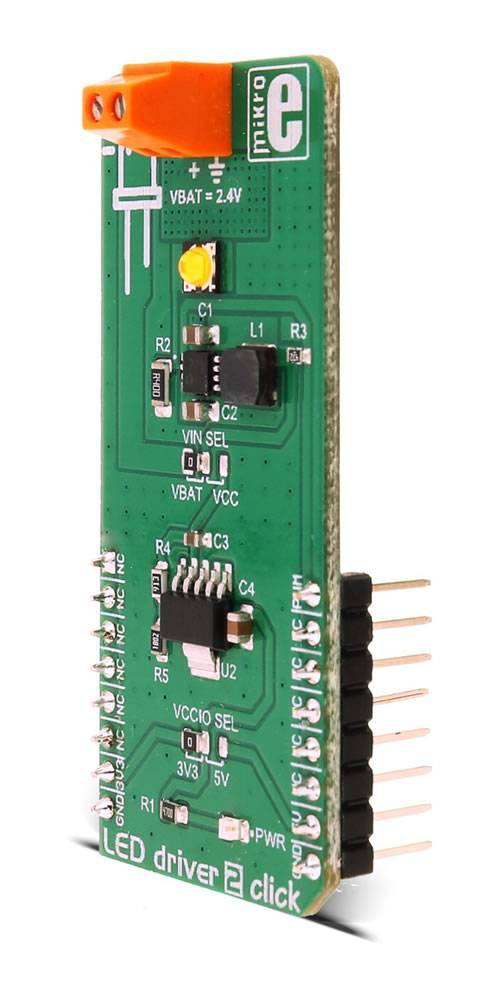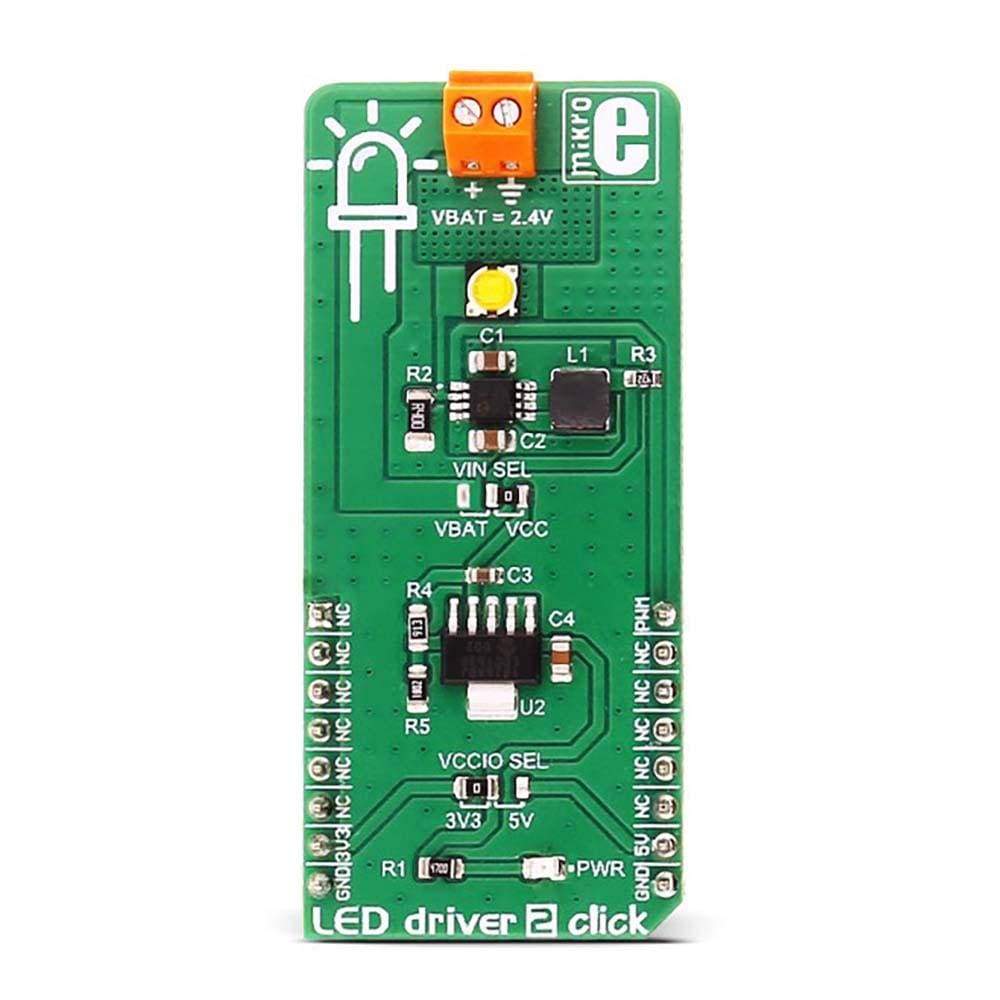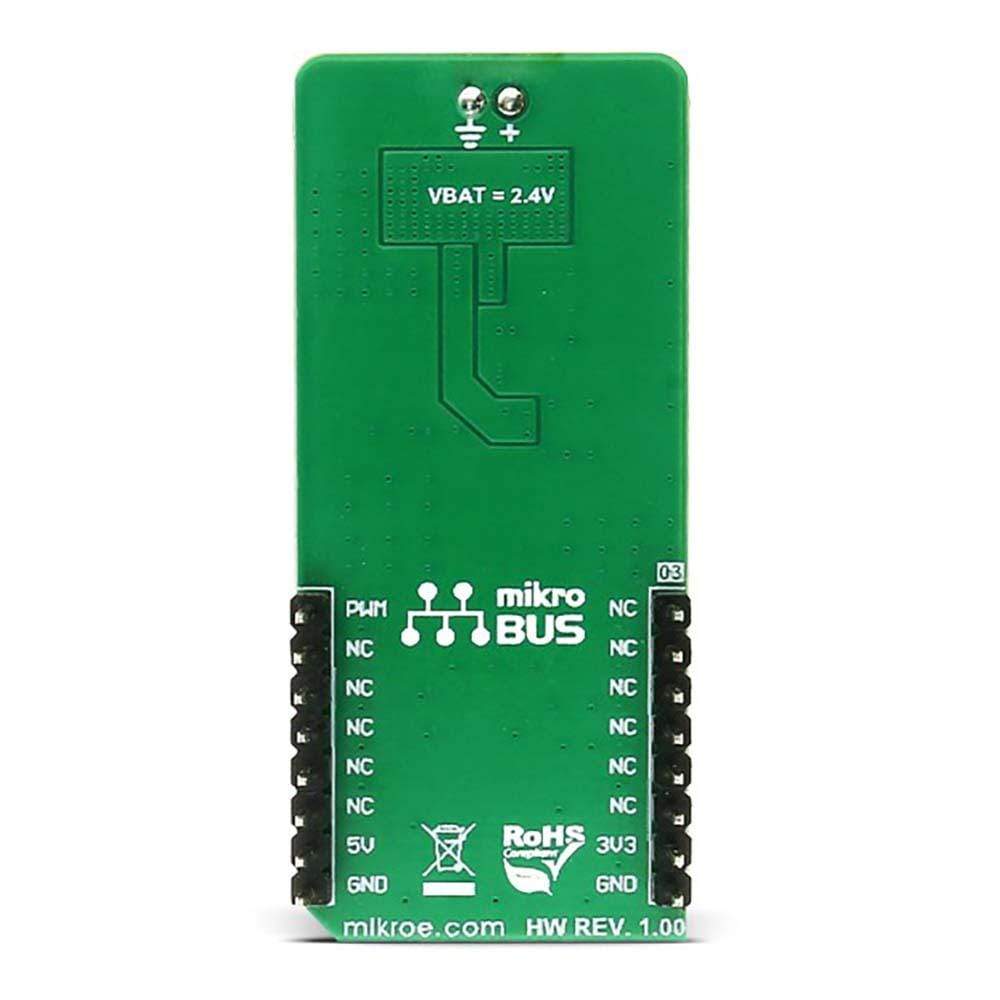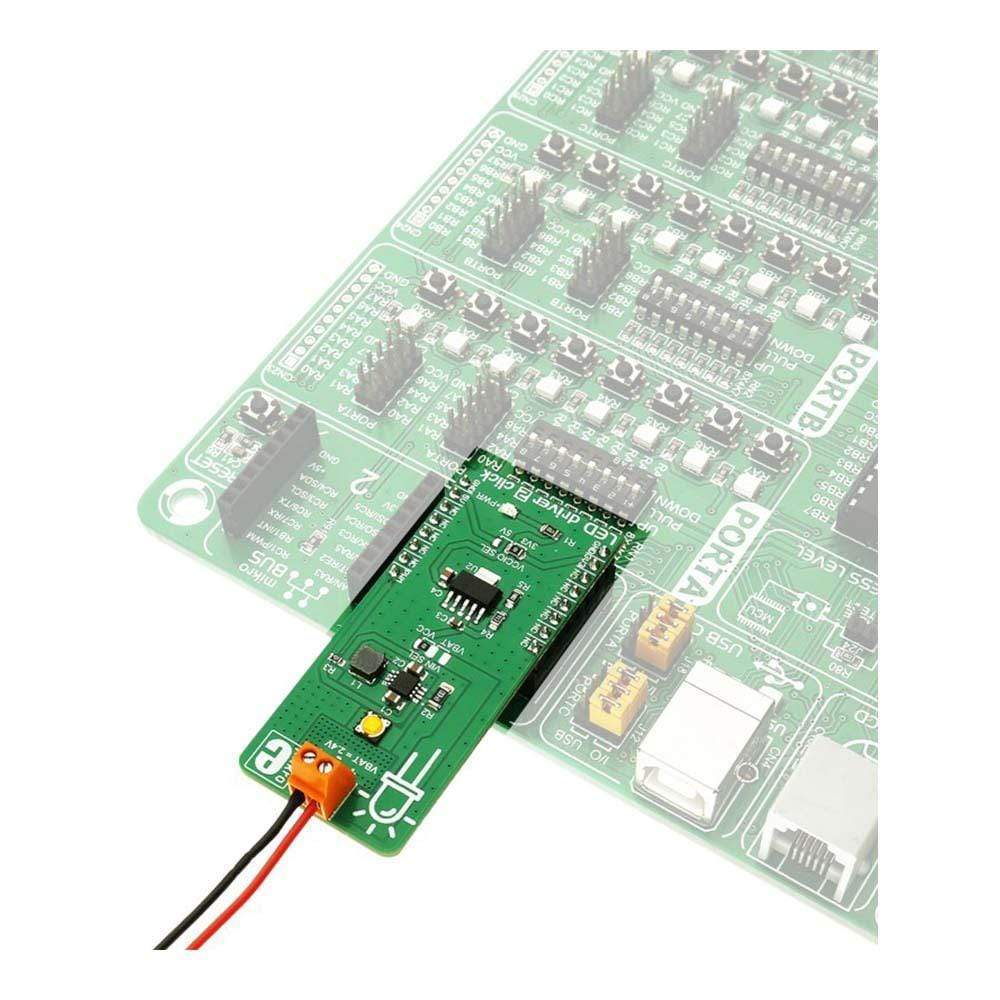



Overview
The LED Driver 2 Click Board™ carries the MCP1643 - LED constant current regulator, made by Microchip. It is a compact, high-efficiency, fixed frequency, synchronous step-up converter, optimised to drive one LED with the constant current. It can be powered by a two-cell alkaline/NiMH/NiCd battery (2.4V), or via the mikroBUS power supply pins. LED Driver 2 Click Board™ also features 3W high power LED by QT-Brightek. This LED can be dimmed by applying the variable duty cycle PWM signal to the EN pin of the MCP1643 regulator, through the PWM pin of the mikroBUS.
Thanks to its relatively high constant current driving capability and the over-voltage protection on the output, this integrated circuit is perfectly suited for high brightness/power LED applications: portable LED lighting products, LED Flashlight and Head Lamps, Rechargeable Torches, General LED constant current applications and so on.
Downloads
Das LED Driver 2 Click Board™ verfügt über den MCP1643 - LED-Konstantstromregler von Microchip. Es handelt sich um einen kompakten, hocheffizienten, synchronen Aufwärtswandler mit fester Frequenz, der für die Ansteuerung einer LED mit Konstantstrom optimiert ist. Die Stromversorgung kann über eine Zweizellen-Alkali-/NiMH-/NiCd-Batterie (2,4 V) oder über die Mikrobus-Stromversorgungsstifte erfolgen. Das LED Driver 2 Click Board™ verfügt außerdem über eine 3-W-Hochleistungs-LED von QT-Brightek. Diese LED kann gedimmt werden, indem das PWM-Signal mit variablem Arbeitszyklus über den PWM-Stift des Mikrobus auf den EN-Stift des MCP1643-Reglers angewendet wird.
Dank seiner relativ hohen Konstantstrom-Treiberfähigkeit und dem Überspannungsschutz am Ausgang ist dieser integrierte Schaltkreis perfekt für LED-Anwendungen mit hoher Helligkeit/Leistung geeignet: tragbare LED-Beleuchtungsprodukte, LED-Taschenlampen und Stirnlampen, wiederaufladbare Taschenlampen, allgemeine LED-Konstantstromanwendungen und so weiter.
| General Information | |
|---|---|
Part Number (SKU) |
MIKROE-2807
|
Manufacturer |
|
| Physical and Mechanical | |
Weight |
0.02 kg
|
| Other | |
Country of Origin |
|
HS Code Customs Tariff code
|
|
EAN |
8606018711796
|
Warranty |
|
Frequently Asked Questions
Have a Question?
Be the first to ask a question about this.





